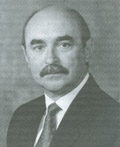10 Essential Concepts of Geography
Geography is basically the study about real phenomena in human life. Geographical phenomena that exist around us are the product of all spatial interrelationships between physical and non-physical factors. In learning geographical phenomena, there are real patterns and abstract patterns. Abstract patterns are in the
form of abstract understanding that is called concept.
There are 10 essential concepts of geography as follows:
1. Concept of Location
Concept of location in geography analyzes the positive and negative aspects of a place on
earth’s surface.
Concept of location is usually used to answer the question of where geographic location is divided in two kinds, they are:
i. Absolute location, that is location of a region based on latitude and longitude.
ii. Relative location, that is the location of a region on earth’s surface that has changing properties because it is influenced by the regions around it. Example: Land in urban area is usually more expensive.
2. Concept of Distance
Distance is a natural separator. Distance is related with location and efforts to satisfy basic needs of life.
Example:
a. Traveling distance to transport raw material to factory, influences the amount of tranportational cost.
b. Land that is located far from a highway is cheaper.
3. Concept of Achievability
Achievability is related to the condition of earth’s surface. For example: a region is isolated because its earth’s surface condition causes it to be hard to reach. Dependency commonly changes according to the
development of economy, science and technology and transportation.
Example: A village that is surrounded by swamps and forest is usually harder to reach than a village that is located on the beach.
4. Concept of Pattern
Pattern is related to dependency on various geographical phenomena on earth’s surface.
Geography learns about patterns of form and spreading of geographical phenomena.
Example:
a. Pattern of settlements in mountainous area is dominated by spreading pattern.
b. Pattern of river in fold regions is commonly trellis.
5. Concept of Morphology
Concept of morphology corresponds to the shape of earth’s surface as product of endogenic and exogenic powers.
Example: Low land along Java’s north coast is dominated by sugarcane plantation.
6. Concept of Agglomeration
Agglomeration is spread that tends to group in a region that is relatively narrow and most profitable.
7. Concept of Utility Value
Utility value is geographical phenomenon or natural resource on
earth’s surface that is relative to each other among regions.
Example:
a. The sea has more utility value for fishermen, compared to farmers.
b. Forests have more utility value for natural lovers compared to students.
8. Concept of Interaction
Interaction is mutual relationship between two regions or more that can produce new phenomena, appearance and problems. In interaction, one phenomenon depends on another.
Example: Interaction of city-village happens because there are differences of natural potentials, for example: the village produces raw material, while the
city produces industrial products. Because both regions need each other, then interaction happens.
9. Concept of Area Differentiation
Area differentiation corresponds to interregional characteristics on earth’s surface. Concept of area differentiation is used to study differences of geographical
phenomena between one regional another on earth’s surface.
Example: The kinds of plant cultivated in highland will be different from the kinds of plant in low lands. Detailed examples are found in Junghuhn’s climate, for example:
a. Zone of height 0-700m, the kinds of plants cultivated are: sugarcane, coconut and corn.
b. Zone of height 700-1500m, the kinds of plants cultivated are: tea, coffee, cacao, tobacco and quinine.
c. Zone of height 1500-2500m, have plants such as pine and casuarinas tree.
d. Zone of height more than 2500m, the kind of its plants is dominated by fungi.
Besides, concept of area differentiation can also be used to see the kind of means of livelihood, for example inhabitants that live in coastal region have dominant means hood as fishermen, different from people that live in lowland who tend to work as farmers as their means of livelihood.
10. Concept of Spatial Interrelatedness
Spatial interrelatedness shows spread relationship between one phenomenon and another, both in terms of physical or non-physical phenomena.
Example:
Rural and urban areas, for example: inhabitants of urban region need foodstuff from the rural area, on the contrary inhabitants of the rural area need to market their natural products to the city.




